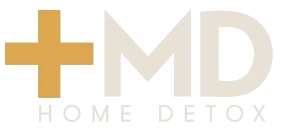When discussing substance abuse and addiction, a significant part of recovery is learning how to deal with addiction cravings. Cravings develop in the mind from repeated drug or alcohol use. Initially, cravings are the desire to relive the experiences one felt while under the influence of a substance.
As dependence and addiction develop, cravings are transformed into wanting the substance over actually enjoying it. In addition, cravings are associated with memories of substance abuse.
For instance, seeing drug paraphernalia causes an increase in the neurotransmitters tied to the memories of using. This increase in neurotransmitter activity is what causes cravings.
Warning Signs of Relapse
Long before relapse, there are several warning signs you need to be aware of to avoid all the progress you have made on your sobriety. The most crucial are the sensations and feelings that hit you when a craving is triggered.
It can come on gradually or hit you from out of nowhere. You might become excited, your heart rate elevates, and your body feels electrified with anticipation. It is as if your body is crying out and telling you this is precisely what it wants, and it wants it now.
Sometimes, the craving is less intense and might just be a feeling or sensation tied to memories of abusing substances. It is no wonder that people are easily tempted to give in, especially during the early stages of recovery.
However, take a moment and ask yourself if you really want to toss everything out that you have worked so hard on? Yes, it is so tempting just to give in. Yet, if you learn how to recognize the carving for what they are, you can better manage them when they occur.
Increase Your Awareness of Triggers To Deal With Addiction Cravings
The most significant warning sign of relapse triggers are events, locations, smells, people, and other such things that are tied to your substance abuse history. In turn, triggers set off cravings.
Just like carvings, triggers can occur randomly or be linked to multiple factors. You want to pay attention to how the intensity of your carvings changes. Take note of what you are doing or who you are around when the craving begins.
For example, if using drugs and drinking are associated with the holidays and being around certain friends or relatives, the holidays can be a stressful time that could trigger very powerful cravings. However, being aware of your risks during the holidays, you could take steps to avoid being around people and the locations where you drank and used drugs.
Tips For How To Deal With Addiction Cravings
#1. Acceptance
Cravings are a normal part of recovery from substance abuse. You need to accept cravings can and do occur. Experiencing a craving does not mean you have relapsed or will relapse. The worst thing you can do is attempt to suppress the craving, which will only make it stronger.
#2. Deal With It
You need to find an effective way to deal with your craving. Cravings will not last indefinitely, so you just need to have a strategy in place of what to do until it subsides. Most mild to moderate cravings only last for about 15 to 20 minutes.
For example, when you feel a craving hit, you might find a quiet location where you can meditate and reflect on what triggered the craving. Another option is to call your sponsor or peer support specialist and talk about the craving.
#3. Create Healthy Distractions
Another way to deal with cravings is with healthy distractions. For example, you could go to the gym and exercise. You could play a video game. You could try out a new recipe. Essentially, you want to find something that will keep your mind focused on something else and give you little time to focus on the craving.
#4. Walk Away
Sometimes being in specific locations or around certain people makes it hard to accept the craving and deal with it. So, the best thing to do is simply walk away and change your circumstances. As you walk away, if you notice the craving starting to fade, you should note why it was triggered.
#5. Think About What Came After
Your mind can try to trick you into giving in to your craving by causing you to think about how great you felt when you used it. You might think about all the sensations you experienced while under the influence of the substance.
Rather than give in, think past that to how you were struggling with your addiction, the guilt and disappointment you felt, and the challenges you faced starting addiction treatment. These thoughts are often sufficient to deal with the craving.
#6. Get Help When You Need It
It is okay to admit that your cravings are becoming more intense, and you need help. It is often impossible to fully uncover every trigger in the early stages of recovery. It is normal to discover new triggers as you progress through recovery.
Yet, these triggers can set off powerful cravings you may not know how to deal with. When faced with these situations, get help by attending a meeting, talking to your sponsor, or seeking additional outpatient rehab.
Getting Help on How to Deal With Addiction Cravings in Beverly Hills, CA
Cravings can be quite powerful when you do not develop the skills needed to deal with them. If you find your cravings are becoming too intense or have given in and relapsed, help is available from MD Home Detox in Beverly Hills, CA.
We offer concierge-level addiction recovery support, and at-home supervised detox. Our goal is to help you maintain your sobriety long-term, as well as regain it if you did relapse. Please feel free to contact us at 1 (888) 592-8541 today!

